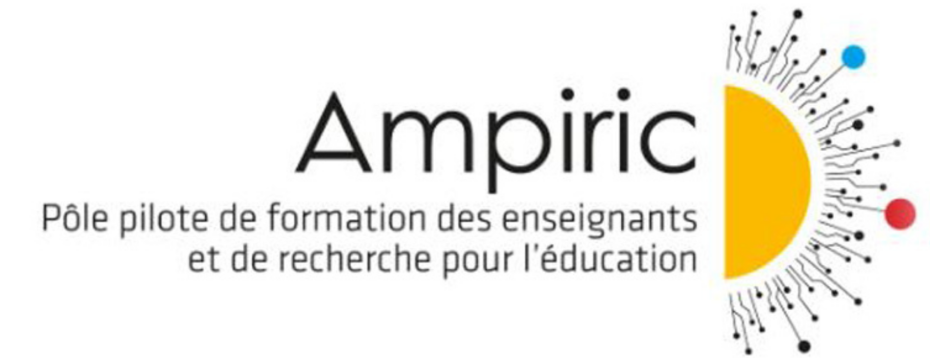Seed Funding Project Calls:
CELaViE - Sandrine ESCHENAUER - LPL
Fundamental learning linked to the development of multimodal language (Kress 2009) and to the quality of relationships with others. We will focus on students' communication skills at the heart of Modern Foreign Languages (MFL) didactics.
We define these competences in the enactive paradigm which constitutes our theoretical framework (Varela 1988, 2017).
They include, in addition to linguistic knowledge and strategic language learning skills, sensory-motivational, multimodal, and psychosocial skills (including emotional and cognitive empathy, creativity, pro-social skills) (Eschenauer 2020). The research design is based on a mixed neurophenomenological (Gallagher 2007; Lutz and Thompson 2003; Varela 1996), qualitative and quantitative methodology.
The research is conducted using a community of practice approach (Wenger 1999), involving teachers-students-artists-trainers-researchers.
Digital Companion - Pascal TERRIEN - ADEF
The study aims to validate the work on Perceived Temporal Profiles (Moreau, 2018) and to work on educational digital companions (cf. Jules, CNED) in order to consider the design of a βêta version on smartphone for the study of audio-visual perceptions of middle school students (at the request of the Ministry of National Education, Youth and Sports, CNED Académie-numérique created Jules, a conversational agent to help middle school students with their homework).
Cigales - Magali OCHS - LIS
Following the success of the first two editions of "Cigales" which took place during the school vacations of All Saints' Day, we wish to renew the experience in 2021.
The aim of this week is to participate in the dissemination of scientific culture and spirit while fighting against the disaffection of female students for this theme. It will take place at the Centre international de rencontres mathématiques (CIRM) on the Luminy campus in Marseille.
A selection of high school girls for this 2021 edition will be made on the basis of a letter of motivation by the organizers of the event with for main criteria the social mix of high school girls and the diversity of the territory, i.e. not more than 2 students from the same high school.
Schedule for a typical day:
- In the morning work on problems in the style of Math in Jeans
- In the early afternoon sports activities
- At the end of the afternoon lecture by a researcher
- One evening per week: movies related to science.
The team for the problem workshops is composed of researchers or teacher-researchers, and doctoral students. The lectures will be given by 3 speakers. The so-called sports sessions and the supervision of the young people will be established by two animators. The event will be organized in its entirety by the I2M with the support of the LIS.
Fingertracking - Stéphane DUFAU - LPC
We propose to build Finger-tracker, a device for measuring finger movements during a keyboard writing task by capturing and processing video. This is an innovative project that mixes an approach of computational vision and cognitive psychology.
The project has three components:
1) a text recognition model from a keyboard image,
2) a "skeleton" detection model (recognition of hand joints on a video)
3) a script under OpenSesame to detect the time of pressing on the keys of a keyboard. By combining these three tools we will be able to visually monitor and automatically measure the conduct of writing production in behavioral tasks. More generally, we will make a qualitative and conceptual leap in the study of the determinants of sequence production.
Attention and inattention in the classroom: a multimodal synchronous behavioral and physiological approach - Jonathan MIRAULT - LPC
Objectives.
First, we will identify how attention and inattention are propagated within a group in order to quantify students' postural behaviors.
Then, these individual/group measurements will give the teacher feedback on when the students were most attentive vs. inattentive.
Finally, it will be interesting to study the correlates between the behavioral events and the physiological measures.
Group dynamics. The use of the experimental classroom located in the INSPE building on the St-Jérôme campus in Marseille allows us to have recourse to an important audio-visual mesh and in particular to a set of wide-angle cameras which film the students from above as well as the interactions between the speaker(s) and the students.
We will study the interactions between students, primarily by quantifying their body movements and attitudes.
Behavioral measures. Using post-processing of the data collected in the classroom we will apply 2D detection and frame-by-frame face tracking to quantify the magnitude of the movements.
The next step is to move to a 3D reconstruction of the faces from the videos to have new measures such as rotation or tilt.
Physiological measurements. Using a connected watch, we will record different physical measurements of the students (non-invasive method) such as temperature, heart rate, skin temperature and oxygen saturation.
Conclusion. By creating a standardized attention score (taking into account behavioral and physiological measures) and by better understanding the spatial and temporal dynamics of attention in the classroom, this work will allow for an in-depth study of individual/collective attention mechanisms as well as a new way of thinking about the organization and delivery of courses.



